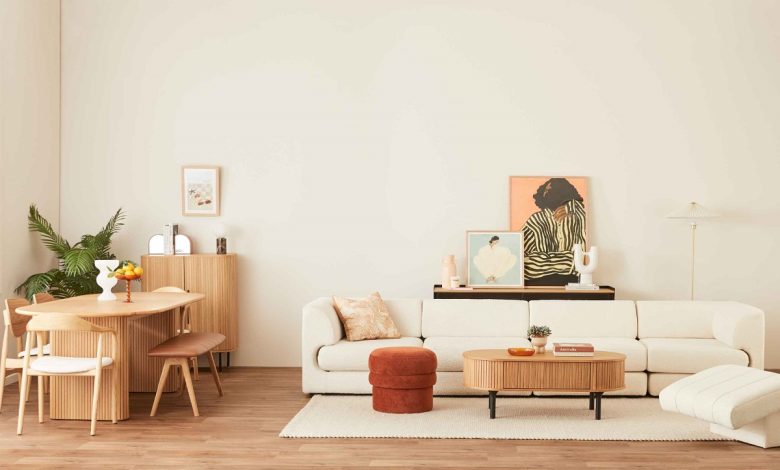Give New Life To Your Living Spaces With Interior Designing

The art of interior design may turn your living areas into colorful havens. There are countless ways to revitalize your surroundings with interior design, whether you’re remodeling a single room or your entire house. Whether your aesthetic is eclectic boho, warm rustic, or modern minimalism, start by establishing your vision and style. Next, think about how your area is laid out and how it functions, making the most of its visual appeal and maximizing flow and utility. To add depth and visual appeal, incorporate a tasteful combination of colors, textures, and patterns. Remember that lighting has a significant impact on the atmosphere and tone of any space. Every piece in your home, from décor and artwork to furniture and accessories, adds to its overall feel and individuality.
What is interior designing?
Interior design encompasses the art and science of enhancing the interior of a space to achieve a more aesthetically pleasing and functional environment. It involves the strategic use of color, furniture, lighting, and decor to create cohesive and visually appealing spaces.
Importance of interior design in enhancing living spaces
Interior design goes beyond mere aesthetics; it influences the mood, productivity, and overall well-being of occupants. By carefully curating elements within a space, interior designers can evoke emotions, optimize functionality, and enhance the overall quality of life.
Key Elements of Interior Design
Color schemes
The choice of colors can significantly impact the ambiance of a room. Warm tones like reds and yellows create a cozy atmosphere, while cool hues like blues and greens promote relaxation. A harmonious color palette ties the room together and sets the tone for the desired ambiance.
Furniture arrangement
Proper furniture arrangement is crucial for maximizing space and promoting flow within a room. Strategic placement of furniture pieces can optimize functionality while maintaining visual balance and harmony.
Lighting
Lighting plays a vital role in setting the mood and highlighting architectural features. Natural light enhances mood and productivity, while layered lighting—combining ambient, task, and accent lighting—adds depth and dimension to a space.
Accessories and decor
Accessories and decor add personality and character to a room. From artwork and textiles to plants and decorative accents, these elements inject style and visual interest into the space, reflecting the occupants’ tastes and preferences.
Benefits of Interior Designing
Enhancing functionality
Well-designed spaces are not only visually appealing but also highly functional. Thoughtful layouts and ergonomic designs optimize space utilization and enhance the overall usability of the environment.
Creating a welcoming atmosphere
Interior design has the power to create inviting and hospitable environments that foster positive interactions and connections. A well-designed space welcomes occupants and makes them feel comfortable and at ease.
Increasing property value
Investing in professional interior design can significantly increase the value of a property. Well-designed spaces appeal to potential buyers and renters, commanding higher prices and accelerating the sales process.
Hiring a Professional Interior Designer
Importance of professional expertise
While DIY projects can be fun and rewarding, complex interior design projects often require professional expertise. Interior designers get interior construction design permits that bring years of experience, industry knowledge, and creative vision to the table, ensuring optimal results and seamless execution.
Process of working with an interior designer
Collaborating with an interior designer typically involves an initial consultation, conceptualization phase, design development, and implementation. Clear communication, mutual respect, and trust are essential for a successful partnership.
Budget considerations
Contrary to popular belief, hiring an interior designer can be cost-effective in the long run. Designers have access to exclusive resources, discounts, and trade pricing, helping clients stretch their budget and achieve their desired outcomes without overspending.
DIY Interior Design Tips
Incorporating personal style
Expressing your personality and individuality through design is key to creating a space that feels uniquely yours. Incorporate personal mementos, heirlooms, and cherished items into your decor to infuse the space with character and charm.
Maximizing space
In smaller living spaces, maximizing every square inch is essential. Opt for multifunctional furniture pieces, utilize vertical space with shelves and storage solutions, and embrace light colors to create an illusion of space and airiness.
Budget-friendly ideas
Interior design doesn’t have to break the bank. Get creative with thrifted finds, DIY projects, and affordable decor options to achieve high-end looks on a budget. Repurpose existing furniture, shop sales and clearance items, and explore online marketplaces for unique finds.
Trends in Interior Designing
Sustainable design
With growing awareness of environmental issues, sustainable design practices are gaining popularity. From eco-friendly materials to energy-efficient appliances, sustainable design prioritizes environmental responsibility without compromising style or functionality.
Minimalism
Less is more in the world of interior design. Minimalist spaces embrace simplicity, clean lines, and clutter-free environments, promoting a sense of calm and tranquility. Streamlined furniture, neutral color palettes, and open layouts characterize this timeless aesthetic.
Biophilic design
Biophilic design seeks to reconnect humans with nature by incorporating natural elements into the built environment. From indoor plants and living walls to natural light and organic materials, biophilic design enhances well-being, productivity, and overall satisfaction.
Overcoming Common Interior Design Challenges
Small spaces
In compact living spaces, creativity is key. Opt for space-saving furniture, utilize vertical space with shelving and storage solutions, and employ light colors and mirrors to create the illusion of space and openness.
Limited budget
Decorating on a budget requires resourcefulness and ingenuity. Shop sales and clearance items, DIY decor projects, and repurpose existing furniture to achieve high-end looks without breaking the bank.
Conflicting design preferences
In households with multiple occupants, conflicting design preferences can pose a challenge. Compromise and collaboration are essential for finding common ground and creating spaces that reflect everyone’s tastes and preferences.
Interior designing is a powerful tool for transforming living spaces into havens of beauty, functionality, and harmony. Whether you’re revamping your home or sprucing up your office, investing in interior design can elevate your surroundings and enhance your quality of life. From professional design services to DIY tips and trends, there are endless possibilities for giving new life to your living spaces.


